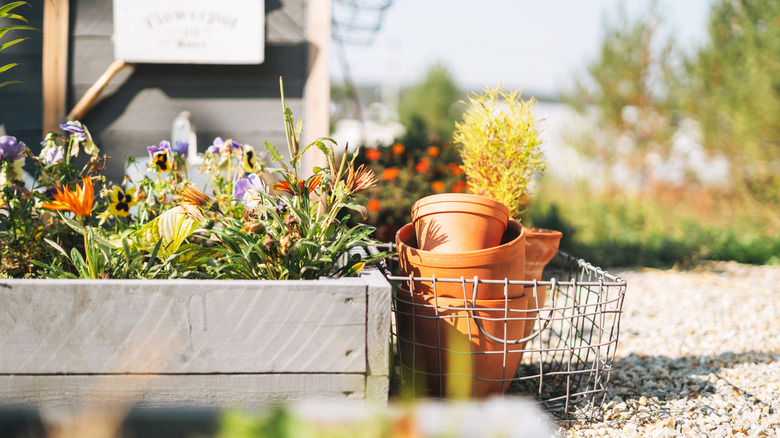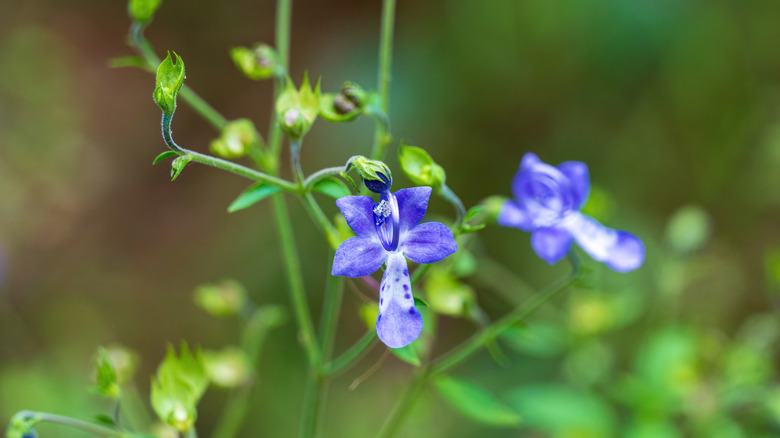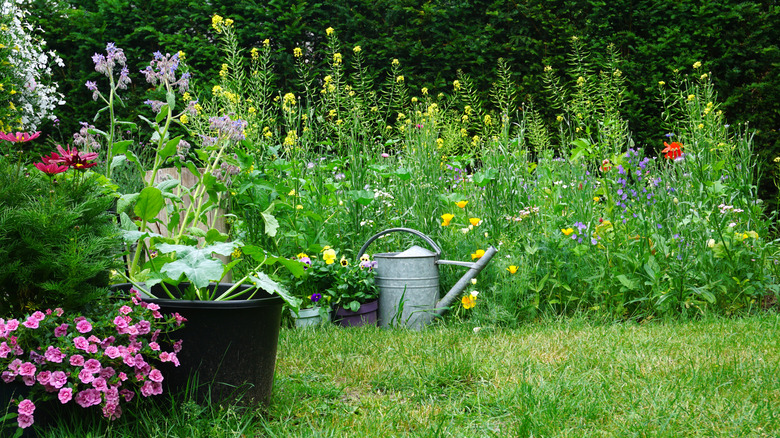The Flashy Self-Seeding Blue Flower That Will Attract More Bees To Your Garden
Pollinators don't stop working when summer winds down. Bees, in particular, stay busy as the season shifts, relying on late-blooming flowers to fuel their activity. One of the most reliable and eye-catching of these blooms is forked bluecurls (Trichostema dichotomum). This flashy, self-seeding native wildflower stands out with its vivid blue petals, curled stamens, and its ability to attract more bees to the garden when they need it most. If you're looking to start a pollinator garden, bluecurls is a beautiful and practical addition.
These flowers aren't just ornamental. Their curved stamens are perfectly positioned to brush pollen onto bees as they forage, making each visit efficient for both pollinator and plant. Bluecurls grows well in sandy and poor soil and reseed themselves year after year with little effort. Here's why bluecurls attract bees to your garden, and how you can grow them to turn your garden into a late-season haven for native pollinators.
How forked bluecurls support bees when they need it most
Forked bluecurls bloom from late summer into fall, just as other nectar sources begin to fade — and that's when bees need them most. This timing makes them an important resource for native pollinators preparing for winter. The flowers produce abundant nectar that attracts beneficial bees to your garden. Color also plays a big role. Bees are naturally drawn to blue and violet tones, and bluecurls have vivid, high-contrast blooms that are easy for pollinators to spot.
Their two-lipped flower structure helps guide bees directly to the nectar, which makes pollination efficient while offering a rich, reliable food source. But the benefits go beyond pollination. Bluecurls add bold texture and vibrant color to dry, sunny spaces. Their fragrant foliage adds a sensory layer to the garden, and once blooming ends, the seed heads offer food for birds. They don't just support bees, but an entire ecosystem, which makes them a standout choice for any pollinator-friendly planting.
Growing forked bluecurls to attract more bees
Forked bluecurls are annual hardy native wildflowers that thrive in USDA Zones 7–11, needing partial shade to full sun, and well-drained, dry, or sandy soils. They do well in spots where other plants may struggle, making them ideal for sunny borders, wildflower patches, rock gardens, and restoration areas. To grow bluecurls, you can directly sow the seeds in fall or early spring. You can use a high-nitrogen fertilizer to support its growth and flower production.
Allow the plants to seed naturally at the end of the season. They will self-sow and return year after year, often expanding into fuller patches over time. For even greater pollinator support, you can pair bluecurls with lanceleaf tickseed (Coreopsis lanceolata), pineland heliotrope (Heliotropium polyphyllum), red salvia (Salvia coccinea), and horsemint (Monarda punctata). These combinations create a diverse ecosystem that supports a wide range of beneficial insects.


